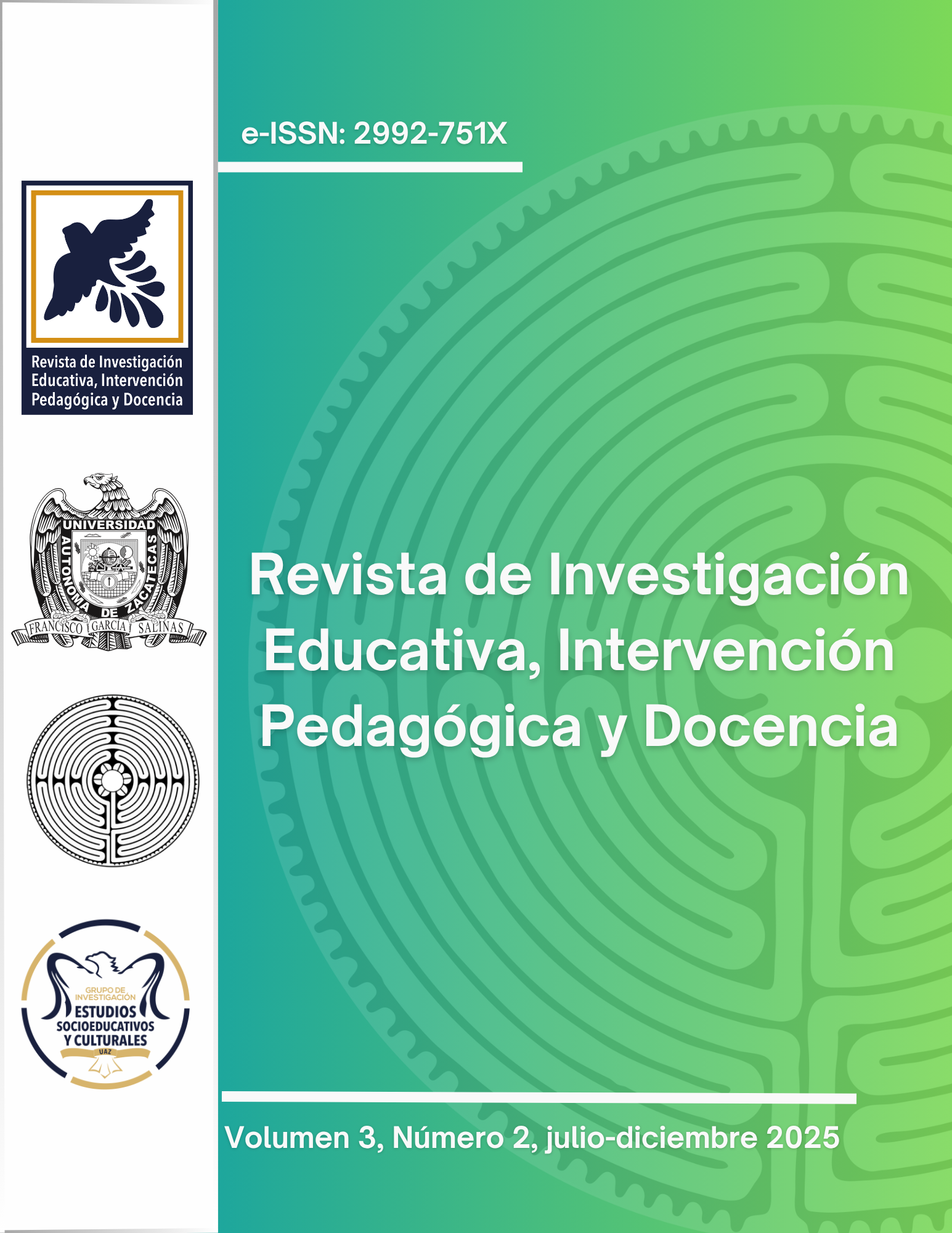From utilization to restriction: how mobile phone use transforms secondary education in the current context
Published — Updated on 2025-08-27
Versions
- 2025-08-27 (3)
- 2025-08-13 (2)
- 2025-07-04 (1)
Keywords
- digital technology,
- mobule phone,
- cognitive process,
- digital literacy,
- teaching
Copyright (c) 2025 Luis Fernando Castañeda Fuentes, Karen Fernanda Amezcua Kosterlitz

This work is licensed under a Creative Commons Attribution-NonCommercial-ShareAlike 4.0 International License.
How to Cite
Abstract
This study examines the repercussions of restricting mobile phone use in secondary school classrooms in Mexico City following the COVID-19 pandemic. During the distance learning period, mobile phones were essential; however, upon the return to in-person classes, their use was limited, potentially affecting students' learning, motivation, and cognitive functions. The study, employing a quantitative approach with a non experimental transactional design, was conducted from June 24 to July 26, 2024, at a public secondary school located in the Gustavo A. Madero district. A probabilistic sample of 298 students and 37 teachers was selected through simple random sampling. Data were collected through questionnaires validated by expert judgement, with internal consistency measured by Cronbach's Alpha coefficient and content validity measured using Aiken’s V coefficient. The results reveal a disconnect between the educational potential of mobile phones and their implementation in the classroom. Although students acknowledge the usselfulness of mobile phones for learning, teachers do not integrate them as an educational tool. This highlights the need to strengthen teacher training in mobile technologies and reassess current educational policies. The findings challenge the idea that mobile phones serve as a true extension of the mind, suggesting a gap between their educational potential and classroom use. Future research employing mixed-methods and longitudinal approaches is recommended to deepen the understanding of mobile phones' impact on education.
Downloads
References
- Adell, J. & Castañeda, L. (2012). Tecnologías emergentes, ¿pedagogías emergentes? En J. Hernández, M. Pennesi, D. Sobrino y A. Vázquez (coord.). Tendencias emergentes en educación con TIC. Barcelona: Asociación Espiral, Educación y Tecnología, 13-32. https://www.researchgate.net/publication/235771131_Tecnologias_emergentes_pedagogias_emergentes
- Apud I. (2014). ¿La mente se extiende a través de los artefactos? Algunas cuestiones sobre el concepto de cognición distribuida aplicado a la interacción mente-tecnología. Revista de Filosofía , 39(1), 137-161. https://revistas.ucm.es/index.php/RESF/article/view/45618
- Astorga Aguilar, C., León Anchía, R. y Schmidt Fonseca, I. (2020). El teléfono celular como herramienta de apoyo en el proceso de aprendizaje para el estudiante no indígena y el estudiante indígena de la Sección Regional Huetar. Revista Ensayos Pedagógicos, 15(2), 155-172. https://www.revistas.una.ac.cr/index.php/ensayospedagogicos/article/view/14720
- Andrada, G. (2021). Mente Extendida, Enciclopedia de la Sociedad Española de Filosofía Analítica. http://www.sefaweb.es/mente-extendida/#1_Mente_Extendida
- Bateson, G. (1970). Form, Substance, and Difference. Steps To An Ecology Of Mind, Jason Aronson Inc, 455-473. https://ejcj.orfaleacenter.ucsb.edu/wp-content/uploads/2017/06/1972.-Gregory-Bateson-Steps-to-an-Ecology-of-Mind.pdf
- Bartra, R. (2006). Antropología del cerebro. La conciencia y los sistemas simbólicos. Fondo de Cultura Económica. https://latam.casadellibro.com/libro-antropologia-del-cerebro/9788415894315/233630
- Clark, A., & Chalmers, D. (1998). The extended mind. Analysis, 58(1), 7-19. https://doi.org/10.1093/analys/58.1.7
- Gobierno de México. (2024). Sistema de Información y Gestión Educativa. Consulta de Escuelas. https://www.siged.sep.gob.mx/SIGED/escuelas.html
- Greif, H. (2014). What is the extension of the extended mind?. Synthes, 194, 4311-4336. https://link.springer.com/article/10.1007/s11229-015-0799-9
- Hernández Sampieri, R., Fernández Collado, C. & Baptista Lucio, M. (2014). Metodología de la Investigación Sexta edición. McGraw Hill Education. https://www.uncuyo.edu.ar/ices/libro-metodologia-de-la-investigacion-6ta-edicion
- Instituto Nacional de Geografía y Estadística. (2020). Comunicado de prensa No. 103/20. Encuesta Nacional sobre Disponibilidad y Uso de Tecnologías de la Información en los Hogares. INEGI. https://www.inegi.org.mx/contenidos/saladeprensa/boletines/2020/OtrTemEcon/ENDUTIH_2019.pdf
- Marchant, C. & O’Donohoe, S. (2018). Homo prostheticus? Intercorporeality and emerging adult-smartphone assemblage. Information, Technology and People, 32(2), pp. 453-474. https://www.emerald.com/insight/content/doi/10.1108/itp-07-2017-0209/full/html
- Martínez Mesa, J., González Chica, D., & Pereira Duquia, R., Bastos, J. (2016). How to select participants in my research study?. An Bras Dermatol, 91(3), 326-330. doi: 10.1590/abd1806-4841.20165254.
- Nijssen, S. , Schaap, G. & Verheijen, G. (2018). Has your smartphone replaced your brain? Construction and validation of the Extended Mind Questionnaire (XMQ). PLoS One, 13(18). https://doi.org/10.1371/journal.pone.0202188
- Rotila. V. (2018). The Smartphone is One of the Externalizations of the Mind that Aspires to the Status of its Extension. Postmodern Openings, 9(4), 65-97. https://doi.org/10.18662/po/46
- Silva Calpa, A. C. & Martínez Delgado, D.G. (2017). Influencia del Smartphone en los procesos de aprendizaje y enseñanza. Suma de Negocios, 8(17), 1-6. https://www.sciencedirect.com/science/article/pii/S2215910X17300010?via%3Dihub
- Vega Encabo, J. (2005). Mentes híbridas: Cognición, representaciones externas y artefactos epistémicos. AIBR Revista de Antropología Iberoamericana. https://www.redalyc.org/articulo.oa?id=62309919


